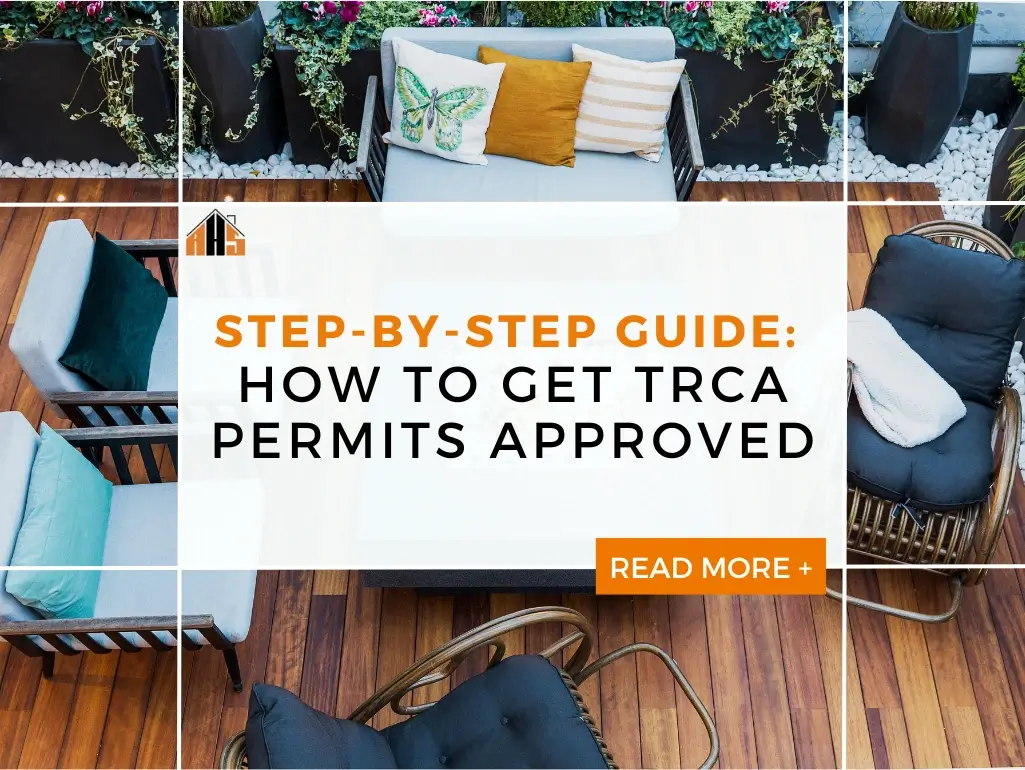
Obtaining a permit from the Toronto and Region Conservation Authority (TRCA) is an essential part of most permit processes when a property is located within this sensitive area. We understand that for even the most seasoned agent, it can be a frustrating experience. Action Home Services has built an entire streamlined process that helps homeowners obtain the TRCA permit efficiently. Though even then, it is never all flowers and roses.
1. Verify if Your Property is Regulated
To know if your property is within the TRCA area, we highly recommend checking the TRCA Regulation Mapping system.
2. Pre‑Consult with TRCA Staff
If you can connect directly with one of TRCA’s planners, you’ll get the clearest and most accurate information, without having to decode the legal language in their online maps or regulations. Much of what’s posted online is written in formal, legal terms, which can be tricky to interpret.
If possible, contact TRCA’s Development Planning & Permits department or their Infrastructure Planning & Permits department. This is often the best starting point. Keep in mind, though, that their response times can be quite long, and you may need to follow up more than once - they’re a busy team!
And remember, if you have any questions along the way, reach out to us at Action Home Services. We’re always happy to help!
3. Complete the Permit Application Package
To start your permit process, go to the TRCA application website.
This will take you to a page on how the application process works and what documentation you would need.
Common forms to complete are:
- Application form under Ontario Regulation 41/24
- Legal topographic survey showing slopes, watercourses, and elevations
- Grading & landscaping plans (existing/proposed grades, drainage, setbacks, erosion control)
- Elevations & floor plans, especially in flood-prone areas
- Fee payment: base fee starts around $995–$1,315 (Will vary), plus potential surcharges and costs depending on complexity.
Be prepared - TRCA may request geotechnical, ecological, engineering, or sediment-control studies.
4. Wait for Completeness Check
Typically, once your application is submitted, a TRCA planner will review it within 14 to 21 business days. If anything is missing, the planner will let you know - and they’re usually very helpful in explaining exactly what’s needed.
However, obtaining or creating those missing documents can be a real headache. That’s where Action Home Services comes in, we can handle this process for you, making it faster and less stressful.
5. Undergo Technical Review & Site Visit
Once all the required information is received, the TRCA planner will circulate your application package to various departments for review. This may include engineers, ecologists, hydrologists, and - if necessary - specialists from other departments, depending on the features of your property and the details of your proposal.
6. Respond to TRCA Comments
TRCA will then issue a comment letter or may schedule a meeting. You’ll have to address all their concerns via revised plans, additional reports, or mitigation strategies. Re-submissions typically take ~15 business days, but complex cases may take longer.
7. Receive Permit Approval
Once everything aligns with TRCA’s “Living City” policies:
- Minor applications: Approval by delegated staff
- Major or complex applications: Require Executive Committee review (typically the first Friday of the month)
Approved permits are stamped and distributed to you, the municipality, added to the TRCA records, and enforcement staff are notified. Permits are valid up to 24 months, with possible extension to 48 months if required.
8. Comply & Keep the Permit Current
After obtaining your TRCA permit, you’ll need to send it back to your original permit technologist at the city to receive your official building permit. In some cases, TRCA approval is the final step, and you’ll already have your documents in hand.
However, before any digging or any landscaping can begin, make sure all other required documentation is complete. This includes utility locates, approvals for any additional permits, and road enclosure permits, if applicable. Ensuring everything is in place will help your project start smoothly and avoid costly delays.
We understand that this process is layers and layers of paperwork just to achieve your dream backyard. So why not save yourself the headache and just call us at Action Home Services for help?


